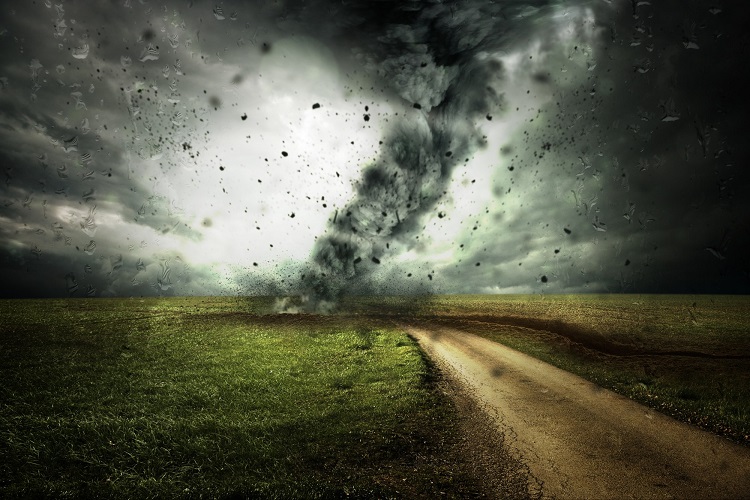There is an average of 1,253 tornados each year in the United States. Although some areas are more prone to experience tornados, they have appeared in every state. Yes, even Alaska.
That’s why it’s important that you know how to protect yourself from a tornado. It’s one of those things that nobody really tells you, but everyone should know. Good tornado safety could mean the difference between life and death.
This comprehensive guide will cover the safety fundamentals.
How to Protect Yourself From a Tornado
You might have done a tornado drill during your school years. But that’s hardly an all-inclusive way to stay safe during a tornado. It’s time to get the whole picture.
Stay safe with these 9 tornado safety tips.
1. Monitor Weather Alerts
If you live in an area prone to tornados, such as tornado alley, you should always stay plugged into the news. Your local area television or a weather radio can alert you in advance of a tornado touchdown. As an alternative, your mobile phone can also receive emergency alerts so long as you have them enabled.
Many areas have weather sirens that alert an impending tornado touchdown. But you should not rely on these since you’ll have very short notice to prepare.
2. Look for the Signs
You may miss weather alerts or the weather station could make a mistake. As an extra precaution, you should know the signs that indicate a tornado may form.
Be wary of dark, low clouds and a green sky. These weather conditions mean a tornado could materialize at any moment. Also be cautious of heavy hail or an extended, blaring howl.
Find shelter and monitor the news if you observe any of these weather events.
3. Create an Emergency Kit
In advance of severe weather, any home should have an emergency weather kit. Not sure what an emergency kit includes? You’re looking for the essentials.
In short, you need a few days of water and nonperishable food. Included should be a flashlight and batteries, along with an emergency radio in case you lose cell phone service. You’ll also want toiletries, contact information, and extra cash to purchase groceries should the power go out in your area.
4. Have an Emergency Plan
You and your family should have a plan in place in case the worst occurs. If a tornado touches down nearby, do you know what to do? A premeditated plan ensures you aren’t scattering for emergency shelter.
Any emergency plan should include areas of shelter in the home and the surrounding community. It should also establish contact guidelines. That way you and your extended family will know you’re safe and unharmed.
5. Prepare Your Home
Weather services can now detect tornados way before they form. If you stay tuned into the local news, you’ll have plenty of time to prepare. Use the extra time to safeguard yourself and your home.
You should bring outdoor items indoors. During the storm, they could become a safety hazard for yourself and others.
This includes items such as lawn chairs and yard tools. But if you have wood and other debris, these are just as dangerous in the hands of a tornado. Consider removing weak limbs from trees, as the strong winds could blow these loose and hurl them about.
6. Find Safe Shelter
Do you know where to go during a tornado? You should find an enclosed area on the lowest floor of your home. Be sure that you stay away from windows, glass, or smaller items that could become projectiles during the storm.
The basement will be the safest area in most homes. If your home doesn’t have a basement, look for a safe space on the first floor. This might be a closet, bathroom, or even a hallway.
You might want to consider installing a storm safe room. These are constructed by ICC 500 standards to maximize safety. And ICC 500 helps to save lives.
7. Avoid Dangerous Areas Outdoors
The outdoors is the most dangerous place during a storm. But if you’re caught off-guard, there are still some precautions you can take to be as safe as possible. Stay away from trees and other forested areas, as the debris can become deadly.
Your best bet is to find a nearby building to take shelter in. You should, however, avoid buildings with open spaces, such as grocery stores. They may seem safe, but these structures are liable to collapse under the strength of a tornado.
8. Assume the Safety Position
At some point in your life, you’ve probably performed a tornado drill. Do you remember the tornado position? It’s simple.
Crouch on your knees and cover the back of your neck. You should tuck your head low to further protect it from flying debris. In the safety of your own home, there are other ways to protect yourself.
Consider putting on a helmet and covering yourself with cushions to shield yourself further.
9. Stay Cautious After the Storm
Even a weak tornado can cause severe damage. It’s best to stay where you are while crews begin to clean up the mess. But if you have to head outdoors, cover yourself completely in durable clothing and wear thick work boots.
Avoid any damaged infrastructure, such as fallen power lines and broken buildings. And never walk through an area covered in hazardous debris.
Be Prepared Before a Tornado Strikes
Premeditation is the key to successfully navigating a dangerous storm. Stay tuned into the news, have a plan in place, and shelter down while the tornado rages outdoors. You and your family will be in a better position to stay safe now that you know how to protect yourself from a tornado.
And as you now know, tornado safety starts with an emergency plan and a survival kit. Get started and discover the safest shelter in your home and the surrounding community. You’ll be glad you did.










